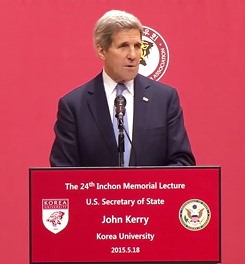Jim Garamone of the American Forces Press Service reports in an article dated October 20, 2010 that the DOD is "working to understand the threats and opportunities that this new domain poses."
Robert J. Butler, Deputy Assistant Secretary of Defense for Cyber Policy, said
"'For the past 14 months, we have been trying to continue to grow U.S. Cyber Command and its capabilities, at the same time looking at strategy and policy. We need to find ways to operate more effectively in cyberspace.'"
"The Department has done a lot of work in education and training, 'and beyond that, things like active defense and new ways of looking at resiliency and new ways to operate in different environments,'" says Butler.
According to Butler, "Defense Department officials have reached out to Great Britain, Australia, Canada and NATO to defend against cyber threats that include nations, rogue states, terrorist groups, criminal gangs and just plain hackers."
"'The focus within the strategy is to go ahead and build partnerships with like-minded nations in the areas of shared awareness, shared warning and collective response. As we move forward, we are trying to build capacity at one level, and at another level – interdependence – you are actually laying a foundation for deterring bad behavior in cyberspace.'"
Speaking on national-level cybersecurity coordination, the article noted that "[w]ho does what and when they do it is under discussion with other government agencies."
"'We have our viewpoints laid out, and we're trying to determine the best way to move forward. One of the key things is to agree on the taxonomy. We hear a lot of discussion about cyber way and cyber attacks, and there's legal terminology with hostile intent, hostile acts. Making sure everyone understands the taxonomy is really important.'"
Butler credits the Homeland Security exercise Cyber Storm III with "helping officials think through responses." Cyber Storm III, conducted at the end of August, looked at the way the U.S. government and private industry faced a cyber threat." That exercise included federal and state entities, the private sector and international partners.
Speaking of Cyber Storm III, Butler said "'We were able to work out what the threat was, what the appropriate response was, who takes action, how do you determine conditions and postures.'"
Going forward, Butler has several questions to which he hopes he will find answers soon.
"'We recognize as we face this evolving threat that more will be required. The question is what kind of hybrid models, what kind of rules, what kind of things do we need to counter a threat that continues to advance? We've got congressional support. We got a blueprint, and we're working on it.'"
****
The full article can be found at the link above or here. The link to Cyber Storm III is also available here.


Leave a Reply